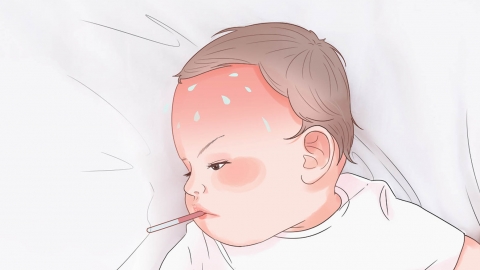What are the early symptoms and manifestations of pneumonia in infants?
Generally, infant pneumonia is a common respiratory disease during infancy and early childhood. Early symptoms and manifestations mainly include abnormal breathing, fluctuating body temperature, changes in mental status, coughing, decreased appetite, etc. The specific analysis is as follows:

1. Abnormal breathing: In the early stages of infant pneumonia, breathing abnormalities are common, characterized by increased respiratory rate. A normal infant's breathing rate at rest is about 40 breaths per minute; when ill, it may exceed 50 breaths per minute. Some infants may also show flaring of the nostrils and chest wall retractions during breathing.
2. Fluctuating body temperature: Most infants experience changes in body temperature during the early stage of illness. This may present as low-grade fever with temperatures between 37.5–38°C, or sudden high fever exceeding 38.5°C. The duration of fever varies. Some infants may also exhibit chills and cold hands and feet during fever episodes.
3. Changes in mental status: Infants will show明显 signs of lethargy. An infant who was previously active, lively, and enjoyed interaction may become sleepy, irritable, and less responsive to surroundings. Crying may be weak, and the infant may be difficult to soothe.
4. Cough: Early cough is typically an irritative dry cough with high frequency, sometimes worsening after feeding or crying. As the condition progresses, the dry cough may gradually turn into a productive (wet) cough. Since infants cannot effectively expel phlegm on their own, swallowing movements may accompany coughing episodes.
5. Decreased appetite: Infant appetite significantly declines, with noticeable reduction in milk intake. An infant who normally drinks 150–200 mL per feeding may only take 50–100 mL when ill. Feedings are often interrupted, and refusal to feed may occur. Some infants may also experience increased episodes of spitting up or vomiting after feeding.
Parents should closely monitor their infant’s breathing, body temperature, mental state, and feeding behavior in daily care. Ensure indoor air circulation and avoid exposing the infant to irritants such as smoke and dust.




